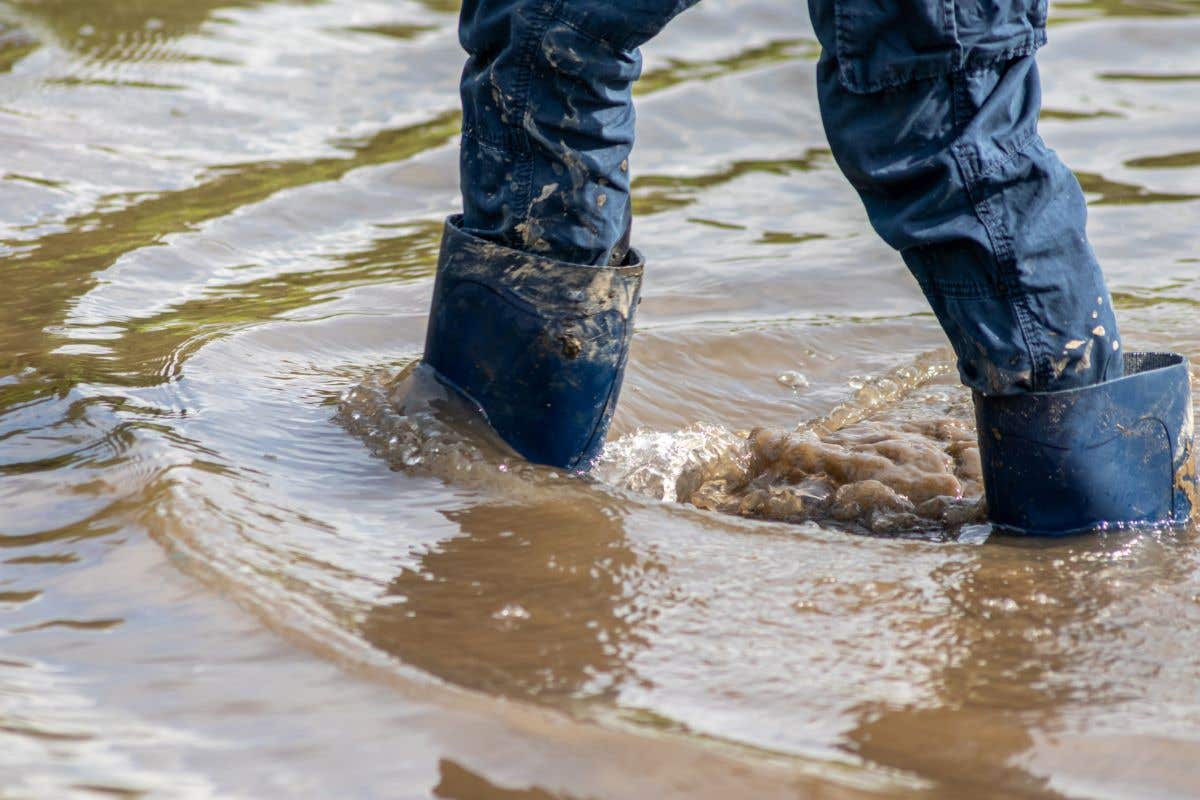In every life, a little rain must fall. But when a light drizzle turns into a deluge, then you may be at risk for flash flooding. These dangerous weather events often catch people unprepared – in part because flash floods move so quickly, but also because they can start some distance away from your location.
Understanding what flash flooding is and what to do if your area is threatened by one is important for keeping your family safe.
What is flash flooding?
The National Weather Service (NWS) defines flash flooding as a flood that begins within six hours of a heavy rainstorm. However, the NWS also claims that flash floods can occur within three hours of a storm or other cause.
That’s an important distinction to note. While flash floods are most commonly associated with heavy rain and slow-moving thunderstorms, they might also happen if a dam, levee, or even an ice jam breaks.
Whatever the cause, flash flooding can do considerable damage. Fast-rising floodwaters have moved boulders, knocked down bridges, and destroyed homes. Even a foot of water can be strong enough to float most cars. Add another foot, and you may see a truck or two floating by.
Where do flash floods occur?
If you take away anything from this article, let it be this: flash floods can happen anywhere. For instance, a thunderstorm may cause a river to overflow, putting downstream homes at risk. But debris could just as easily dam up the same river and cause flooding upstream.
That said, certain areas are more prone to flash floods. These include:
- Areas near rivers and other bodies of water.
- Mountains where steep slopes may cause rapid runoff.
- Densely populated places where construction limits the amount of water the ground can absorb.
- Coastal areas where hurricanes are common.
Another area with flash flood risk is places near dams and levees that may break or overflow.
How to know if a flash flood is coming
In some cities, you can sign up to have emergency alerts sent to your cell phone to notify you of possible threats so you can take appropriate action. These typically include flood advisories, watches, and warnings as well as flash flood warnings.
What is a flood advisory?
A flood advisory is a notification sent to residents by local authorities that raises concerns of flooding. Typically, this indicates that the current weather situation may cause flooding that could result in significant inconvenience and dangerous conditions if people are not careful. Advisories can escalate to a watch or warning if conditions worsen.
What is a flood watch?
A flood watch usually means the local authorities believe weather conditions favor flooding This may mean they’ve seen an extreme flow of water into a dry area or rapidly rising levels in nearby bodies of water. A watch usually doesn’t mean that a flood will happen, but people should prepare for that possibility. Moreover, residents are urged to pay attention to flood watches because they’re often a precursor to a flash flood warning.
What is a flood warning?
A flood warning indicates that a flood has already occurred or is very likely to occur. People in low-lying areas need to move to higher ground and should listen for information about mandatory evacuations.
What is a flash flood warning?
A flash flood warning is the most serious flood alert authorities can usually give. This warning indicates that either enough rain has fallen for a flash flood to occur or flash flooding has already happened in the area. As with a flood warning, people in low areas may need to evacuate.
If your area doesn’t have an emergency alert system, then you want to tune into your local radio or television stations to find out exactly what the threat is and what you should do. These broadcast centers will have the most up-to-date information about the weather conditions to help keep you safe.
What to do in a flash flood
The key to keeping your family safe in an emergency is to plan ahead. For example, you may want to make a disaster preparedness plan that includes steps like:
- Putting together a disaster supply kit.
- Knowing where shelters are and the routes to get to them.
- Having a contact list handy.
- Practicing your plan with your family.
- Moving electronics to upper floors in your home.
In a flash flood, you may need to head for higher ground, so be sure you’ve identified spots that fit that description.
In addition to planning ahead, you want to pay attention to what’s happening around you. Keep an eye out for rapidly rising water and leave your radio or television tuned to the news. If you do encounter water, be cautious. Floodwaters are not just muddy, which means you can’t know what’s in it, but they’re often contaminated so keep your children and pets out of it. Heed the advice from the NWS to “Turn around, don’t drown.”
One more note about preparing for a flash flood: home insurance generally doesn’t cover flood damage. So the final step to protecting your home and family is to get flood insurance.


